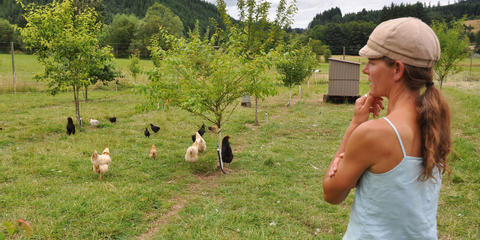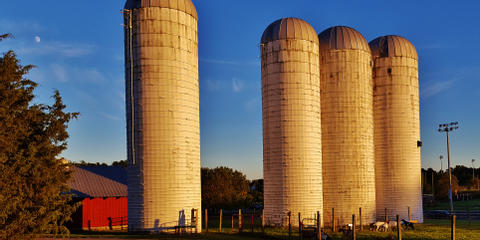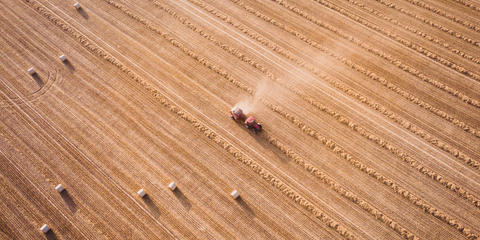Federal funding programs are under review as of 1/27/25. We'll make updates as new info is released.
Our sources indicate that this program is closed indefinitely and unlikely to reopen.
The Pandemic Assistance Revenue Program (PARP) will assist eligible producers of agricultural commodities who experienced revenue decreases in calendar year 2020 compared to 2018 or 2019 due to the COVID-19 pandemic. PARP will help address gaps in previous pandemic assistance, which was targeted at price loss or lack of market access, rather than overall revenue losses.
PARP provides financial assistance for producers who suffered at least a 15% decrease in allowable gross revenue for the 2020 calendar year, as compared to 2018 or 2019.
Previous programs under USDA’s Pandemic Assistance for Producers initiative targeted specific loss aspects, such as price loss. To address gaps in assistance, PARP targets overall revenue losses and supports producers of certain commodities that were not previously eligible for pandemic assistance. Producers who participated in previous USDA pandemic assistance programs may receive additional assistance through PARP if they exhibit a revenue loss after factoring in other payments.
Eligibility
Additional Eligibility Requirements for PARP
To be eligible for PARP, you must:
Have been in the business of farming during at least part of the 2020 calendar year and had a 15 percent decrease in allowable gross revenue for the 2020 calendar year as compared to:
The 2018 or 2019 calendar year, as elected by the producer, if they received allowable gross revenue during the 2018 or 2019 calendar years, or
The producers’ expected 2020 calendar year allowable gross revenue if the producer had no allowable gross revenue in 2018 or 2019.
Be a citizen of the United States, a resident alien, a partnership or organization structure organized under state law, an Indian Tribe or Tribal organization, or an eligible foreign person or foreign entity.
Have an average adjusted gross income (AGI) of less than $900,000 for tax years 2016, 2017, and 2018.
Comply with provisions of the “Highly Erodible Land and Wetland Conservation” regulations, often called the conservation compliance provisions.
Not have a controlled substance violation.
Eligible and Ineligible Commodities
For PARP, eligible agricultural commodities include crops, aquaculture, livestock, livestock byproducts, or other animals or animal byproducts that are produced as part of a farming operation and are intended to be commercially marketed. This includes only commodities produced in the United States or those produced outside the United States by a producer located in the United States and marketed inside the United States.
The following commodities are not eligible for PARP:
Wild free-roaming animals.
Horses and other animals used or intended to be used for racing or wagering.
Aquatic species that do not meet the definition of aquaculture.
Cannabis sativa L. and any part of that plant that does not meet the definition of hemp.
Timber
Terms
Allowable Gross Revenue
Allowable gross revenue for PARP includes revenue from:
Sales of agricultural commodities produced by the applicant, including the portion of sales resulting from value added through post-production activities.
Sales of agricultural commodities an applicant purchased for resale, less the cost or other basis of such commodities.
The taxable amount of cooperative distributions directly related to the sale of the agricultural commodities produced by the applicant.
Benefits under certain federal agricultural programs and disaster programs. This excludes conservation programs, the Coronavirus Food Assistance Program 1 (CFAP 1) and Coronavirus Food Assistance Program 2 (CFAP 2), the Pandemic Livestock Indemnity Program (PLIP), the Spot Market Hog Pandemic Program (SMHPP), and 2020 Emergency Relief Program (ERP) payments.
Commodity Credit Corporation (CCC) loans reported under election if treated as income and reported to the Internal Revenue Service (IRS).
Crop insurance proceeds.
Payments issued through grant agreements with FSA for losses of agricultural commodities.
Grants through the National Oceanic and Atmospheric Administration (NOAA) and state program funds providing direct payments for the loss of agricultural commodities or the loss of revenue from agricultural commodities.
Revenue from raised breeding livestock.
Revenue earned as a cattle feeder operation.
Other revenue directly related to the production of agricultural commodities that IRS requires the applicant to report as income.
Pandemic Market Volatility Assistance Program (PMVAP) benefits received shall be included for 2020 “allowable gross revenue” purposes, regardless of the calendar year in which the payment was received.
Application Instructions
Once signup opens, eligible producers will be able to apply for PARP by working directly with the Farm Service Agency (FSA) office at their local USDA Service Center. Applications will be accepted via mail, fax, hand delivery, or electronic means.
Alternatively, producers with an eAuthentication account will be able to apply for PARP via our PARP Application Portal. Applications will be completed, electronically signed, and submitted directly to your local USDA Service Center through this online system. Please reference our PARP Application Portal User Guide for additional information, including step-by-step application instructions. Producers interested in creating an eAuthentication account should visit farmers.gov/sign-in to learn more.
FSA staff will work with you to complete portions of the CCC-902 – Farm Operating Plan – if necessary. Additionally, the following forms will be needed to apply for PARP. These forms will be available for download once signup opens on January 23, 2023. Certain forms may already be on file with the FSA office at your local USDA Service Center.
PARP will use revenue information that is readily available from most tax records. FSA encourages producers to have their tax documents from the past few years and supporting materials ready, including:
Schedule F (Form 1040); and
Profit or Loss from Farming or similar tax documents for calendar years 2018, 2019 and 2020 for PARP.
Forms
Resources
Related Programs

Direct Farm Operating Loan
Farm Service Agency
- Loan
- General
- Equipment
- Animal Purchase
- Diversification
- Marketing
- Processing
- Feed
- Seed
- Fertilizer
- Cash Rent
- Housing
- Construction
- Infrastructure
- Repairs
- Pest Management
- Storage
- Legal & Finance
- Water Management
- Waterway Protection
- Water Quality
- Conservation
- Training
- Immigrants
- CSA
- Refinancing
- Reduced Tillage
- National
- Any

Environmental Quality Incentives Program (EQIP)
Natural Resources Conservation Service
- Grant
- Cost Share
- Conservation
- Cover Crops
- Forest Management
- Certified Grassfed
- Irrigation
- High Tunnel
- Certified Organic
- Air Quality
- Alternative Energy
- Soil Health
- Wildlife & Pollinator Habitat
- Water Quality
- Weather
- Research
- Landscape
- Precision Ag
- Drought
- Nutrient Management
- Carbon Capture
- Fencing
- Agroforestry
- Grazing Management
- Reduced Inputs
- National
- Any

Farm Storage Facility Loan Program (FSFL)
Farm Service Agency
- Loan
- Infrastructure
- Equipment
- Storage
- Lighting
- Delivery Vehicle
- National
- Oilseeds
- Peanuts
- Pulse Crops
- Hay
- Honey
- Biomass
- Fruits
- Vegetables
- Floriculture
- Hops
- Maple Sap
- Milk
- Cheese
- Yogurt
- Butter
- Eggs
- Rye
- Aquaculture
- Poultry
- Livestock
- Grains

Inflation Reduction Act Assistance for Distressed Borrowers
Farm Service Agency · Closed Indefinitely
- Grant
- Discount
- Socially Disadvantaged
- Disaster Relief
- National
- Any
Details
Release Date
January 23, 2023
Deadline
July 14, 2023
Organization
Financial Instrument
Grant
Updated March 27, 2024
Image Credit: Ivan Bandura
This information was gathered from public sources. Ambrook is not responsible for or able to affect the results of any financial programs listed, nor are they responsible for any incorrect information that is listed or is on the hyperlinked external sites. All information is subject to change.
Explore hundreds more programs on Ambrook.
